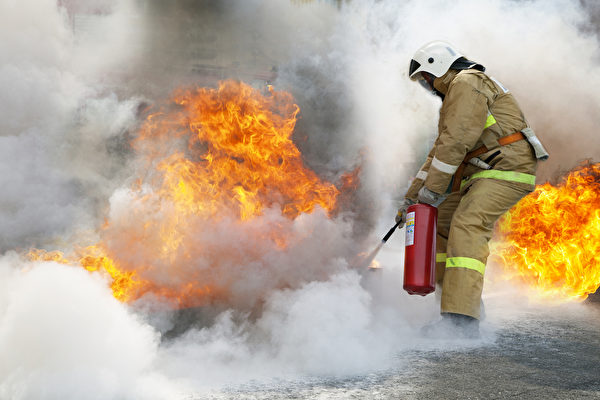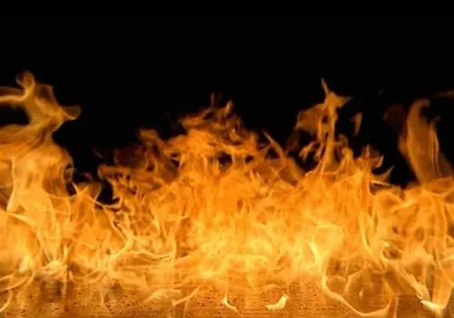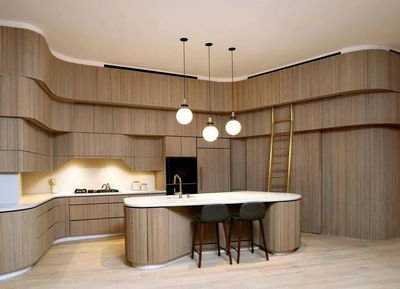In modern architecture and interior design, fire safety has become one of the most essential considerations. Whether for residential, commercial, or public buildings, the materials used must not only meet aesthetic and functional standards but also ensure maximum fire protection. Among the many decorative and structural materials available today, HPL (High-Pressure Laminate) fire resistant boards stand out due to their excellent flame retardancy, durability, and design versatility.
But how well do you understand the fire resistance ratings of HPL fire resistant boards? What do these ratings mean, and why are they so important when it comes to ensuring safety? In this comprehensive guide, we’ll take a deep dive into HPL fire-resistant board classifications, performance parameters, and practical applications, so you can make a more informed and safer choice for your projects.

What Is an HPL Fire Resistant Board?
HPL (High-Pressure Laminate) fire resistant boards are decorative surface materials manufactured through the impregnation of multiple layers of kraft paper with phenolic resin, combined with decorative paper and a protective overlay. These layers are pressed under high temperature and pressure (typically around 150°C and 1000 psi) to form a hard, durable sheet.
The addition of flame-retardant resins and additives during production significantly improves the board’s resistance to heat and fire. The result is a dense, hard surface that not only resists fire but also offers excellent scratch resistance, impact resistance, and moisture resistance.
Because of these advantages, HPL fire-resistant boards are commonly used in:
Public facilities like hospitals, schools, airports, and shopping malls
Office interiors and commercial spaces
Kitchens, toilets, and furniture surfaces
Wall cladding, partitions, and door panels
Understanding Fire Resistance Ratings
The fire resistance rating of building materials is a crucial safety measure that indicates how long a material can withstand exposure to fire before it fails. For HPL fire resistant boards, ratings are typically determined according to the Chinese national standard GB 8624, as well as European EN 13501 or ASTM standards in international markets.
Fire resistance ratings are classified into different grades, usually ranging from A1 (non-combustible) to E (easily flammable).
Here’s a breakdown of the main classifications:
| Grade | Classification | Description | Typical Fire Resistance Time |
| A1 | Non-combustible | No contribution to fire | > 120 minutes |
| A2 | Very limited combustibility | Very high fire resistance | 30–120 minutes |
| B1 | Flame retardant | Self-extinguishing, limits flame spread | 30–60 minutes |
| B2 | Combustible | Burns slowly | 10–30 minutes |
| B3 | Easily flammable | Burns quickly | < 10 minutes |
Most high-quality HPL fire-resistant boards achieve a B1 rating, meaning they can resist open flame for 30–60 minutes and prevent flame spread effectively.

Why Fire Resistance Ratings Matter
Fire resistance is not just a technical term—it directly relates to human life and property safety. In the event of a fire, materials with higher ratings can buy valuable time for evacuation and reduce fire damage.
Here’s why it’s critical to pay attention to these ratings:
Safety Assurance – Materials with high fire ratings minimize flame spread, reducing casualties and damage.
Regulatory Compliance – Building codes often mandate the use of flame-retardant materials in public buildings.
Property Protection – Fire-resistant materials help contain fire, minimizing structural loss.
Insurance Benefits – Many insurance companies offer better terms for buildings using certified fire-resistant materials.
When selecting HPL fire resistant boards, always ensure that the product comes with certification reports proving compliance with GB 8624, EN 13501, or ASTM E84 standards.
Technical Parameters of HPL Fire Resistant Boards
To evaluate the quality and performance of an HPL fire-resistant board, we need to look beyond the fire rating. Here are some key technical parameters that determine the board’s overall safety and durability:
1. Flame Retardant Rating
As discussed, HPL boards typically range between B1 and A2 grades, with B1 being the most commonly used for interior decoration. The rating reflects how well the board resists ignition and flame spread under direct heat.
2. Density
The density of an HPL board affects its compactness and structural strength. High-density boards (≥1350 kg/m³) have better durability, impact resistance, and longer fire endurance times.
3. Thickness
Typical HPL fire-resistant boards have surface thicknesses ranging from 0.8mm to 1.2mm. Combined with a flame-retardant substrate (like fireproof MDF or calcium silicate board), the total thickness can reach 6mm or more, achieving Class A fire performance.
4. High-Temperature Resistance
A quality fire-resistant HPL board can withstand temperatures up to 180°C or higher without deformation, melting, or toxic gas emission.
5. Smoke Generation
Low smoke generation is essential during a fire. Premium HPL boards are formulated to minimize smoke and toxic fume emission, allowing safer evacuation during emergencies.
6. Tensile Strength
High tensile strength ensures that the board remains structurally stable under stress. HPL boards with superior bonding and resin composition resist cracking or breaking during fire exposure.
7. Impact Resistance
HPL fire-resistant boards must also maintain mechanical integrity during physical stress. Good impact resistance prevents fragmentation, protecting walls, doors, and panels even under extreme conditions.
8. Moisture Absorption & Deformation
With a moisture absorption deformation rate below 0.35%, HPL boards remain stable in humid environments like bathrooms, kitchens, and restrooms. They are waterproof and anti-swelling, ensuring long-term dimensional stability.
9. Formaldehyde Emission
Environmentally conscious manufacturers like Polybett produce HPL boards that meet E1-grade formaldehyde emission standards (≤1.5 mg/L as per GB 18580-2017), ensuring indoor air safety.

Applications of HPL Fire Resistant Boards
The versatility and safety of HPL fire-resistant boards make them ideal for a variety of applications. Here are some common use scenarios:
1. Public Buildings
In schools, hospitals, airports, and stations, B1-grade HPL boards are widely used for wall cladding, partitions, and ceilings, providing safety and easy maintenance.
2. Office Spaces
HPL fire-resistant panels are often installed in workstations, meeting rooms, and corridors, offering both aesthetic appeal and fire protection.
3. Residential Buildings
For homes, HPL fire-resistant boards are perfect for kitchen countertops, cabinets, and wall panels, combining style with safety.
4. Commercial Areas
Retail stores, restaurants, and shopping malls prefer decorative HPL panels for their color variety, durability, and flame retardancy.
5. Furniture and Fixtures
HPL fire-resistant laminates are used for tabletops, doors, cabinets, and lockers, ensuring longevity in high-traffic environments.
How to Choose the Right HPL Fire Resistant Board
When purchasing an HPL fire-resistant board, keep the following key points in mind:
Check Fire Certification: Ensure the product is tested according to GB 8624 or EN 13501 standards.
Inspect Product Density & Thickness: Denser and thicker boards generally perform better under fire exposure.
Verify Physical Test Reports: Look for impact, moisture, and temperature resistance certifications.
Consider the Application Area: Choose higher-rated boards (A2 or B1) for high-risk zones such as schools and kitchens.
Buy from Reputable Brands: Trusted brands like Polybett, Wilsonart and Formica ensure consistent quality and compliance.
Testing Methods for Fire Resistance
Fire performance testing for HPL boards typically includes:
Ignition Test: Measures how quickly the board ignites.
Flame Spread Test: Evaluates how fire propagates across the board’s surface.
Smoke Density Test: Determines the quantity of smoke produced.
Heat Release Rate (HRR) Test: Assesses how much heat is emitted during burning.
These tests simulate real fire conditions, ensuring that the HPL board performs reliably when it matters most.
Maintenance and Longevity
Even though HPL fire-resistant boards are highly durable, proper maintenance ensures their longevity:
Clean regularly with neutral detergent—avoid abrasive tools.
Do not expose to direct high heat sources (like open flames).
Ensure proper installation to avoid gaps where moisture may accumulate.
Periodically check for surface cracks or delamination.
Well-maintained HPL boards can last over 15–20 years, maintaining both aesthetic and functional performance.
Environmental Benefits
Modern HPL fire-resistant boards are also designed with sustainability in mind.
They often use:
Eco-friendly resins with low VOC emissions
Recyclable kraft paper layers
Sustainable production processes that reduce energy consumption
As such, HPL boards not only ensure fire safety but also contribute to green building certification systems like LEED and BREEAM.
Conclusion
In today’s world, fire safety and material quality are non-negotiable aspects of any construction or interior design project. The HPL fire resistant board, with its superior flame retardancy, mechanical strength, and aesthetic flexibility, has become a trusted choice across various sectors.
By understanding fire resistance ratings (A1–B1), analyzing technical parameters, and selecting certified materials, you can significantly enhance the safety and durability of your environment.
Whether you’re building a home, office, or public facility, remember — choosing a high-rated HPL fire resistant board is not just an investment in quality but a commitment to safety and peace of mind.
English
Русский
العربية
Français
Español
Português
Deutsch
italiano
日本語
한국어
Nederlands
Tiếng Việt
ไทย
Polski
Türkçe
አማርኛ
Bahasa Melayu
தமிழ்
Filipino
Bahasa Indonesia
magyar
Română
Монгол
қазақ
Српски
हिन्दी
فارسی
Kiswahili
Slovenčina
Slovenščina
Svenska
українська
Ελληνικά
Suomi
Հայերեն
עברית
اردو
Shqip
বাংলা
Hrvatski
Afrikaans
Māori
සිංහල
Oʻzbekcha
latviešu
Беларуская мова
Bosanski
Български
ქართული
Lietuvių
Malti
Runasimi





